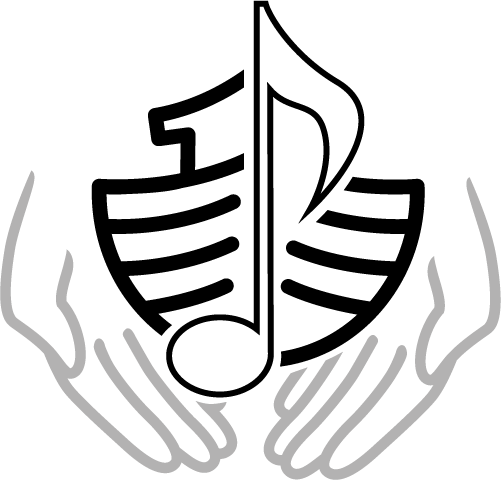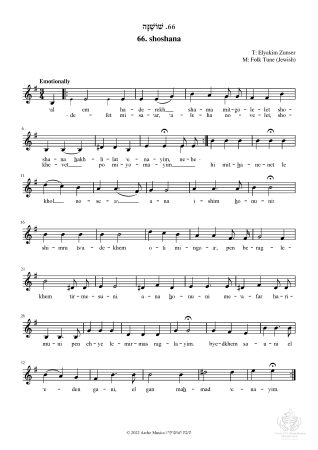שושנה | Shoshana | The Rose (1912)
Artist: Abraham Zvi Idelsohn (1882-1938)
Lyrics: Elyakum Zunser
Tune: Folk Tune (Jewish)
This song was written and composed by the poet-performer Elyakum Zunser (1840-1913). Zunser was one of several Yiddish "troubadours" of nineteenth-century Eastern Europe who expressed in their songs the secular, “enlightened” ideas popular in Jewish society at that time. The original Yiddish song was composed in 1860.
The Hebrew version of the poem, along with the melody, was published in Menatseah Baneginot [Conductor in Musicals] by Nisan-Zwi Golomb (1853-1934) (Vilna, 1883-1884: p. 72). Golomb published the music notes from right to left, several years before Idelsohn adopted this system without acknowledging Golomb.
The original song has five verses. It expresses a longing for Zion that predated the Hibat Zion [Love of Zion] movement and the Zionist congresses. Idelsohn included only two verses: 1 and 2, in Sefer Ha-Shirim.
Only three songs by Zunser were translated into Hebrew. All of them are included in Sefer Ha-Shirim: "Shoshana", "Ha-Mahreshet" [The Plow] (no. 75) and "Shivat Tsiyon" [The Return to Zion] (no. 79). As these songs were already popular, Idelsohn designated them as "folk songs".
In “Shoshana”, a rose lies on the road, begging passersby to leave her in peace. She reminisces about when she bloomed in the king's garden, before being cut off and discarded. In the following verses, which were not included by Idelsohn, the rose is revealed as the people of Israel, expelled from Zion two thousand years ago and now wracked by despair. But one day soon, God will resurrect this nation and bring it back to Jerusalem, to Zion.
The melody is the same as in the Yiddish original song. In the Table of Contents to Sefer Ha-Shirim, Idelsohn designated this song as "Polish"; above the notes, he designated it as a "Folk Tune". Later, when he included “Shoshana” in his Thesaurus of Oriental Jewish Melodies, Songs of the Eastern European Jews, vol. 9 (1932: no. 417), he referred to it as a Yiddish folksong. The melody is in a minor key.
Included in
Scores
Original (PDF) Modernized (PDF)

